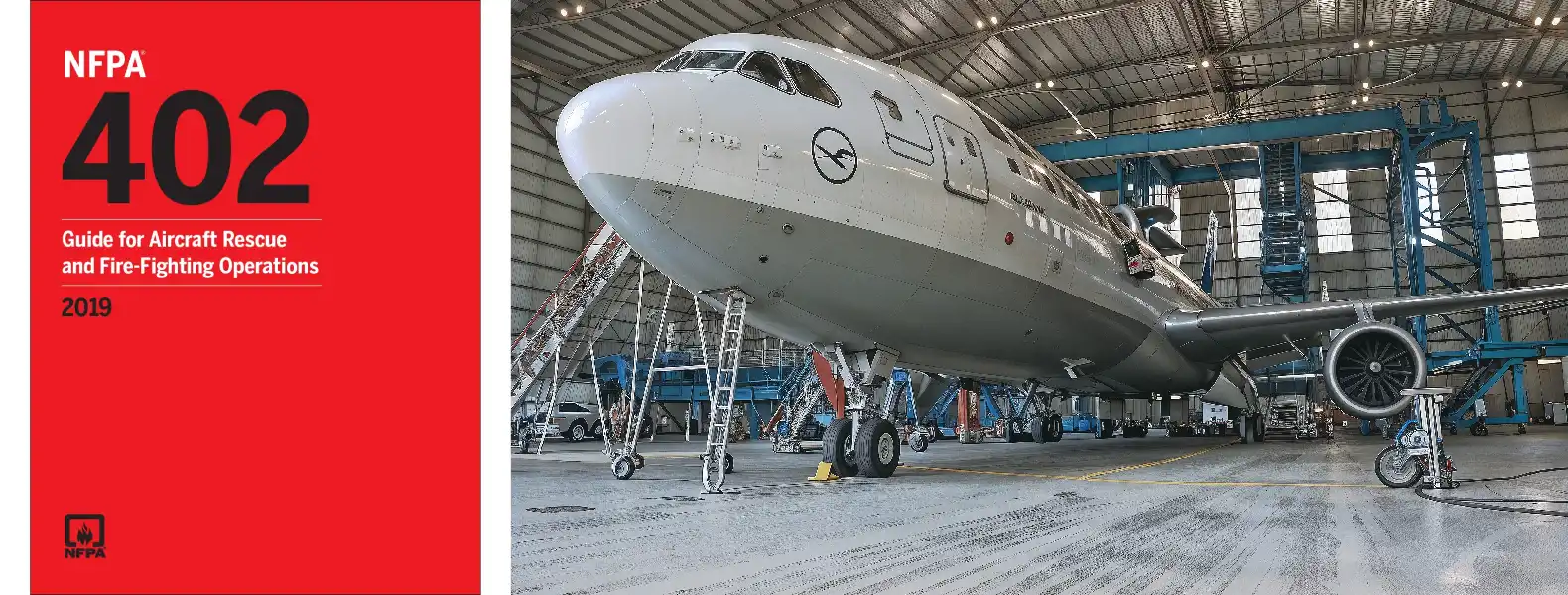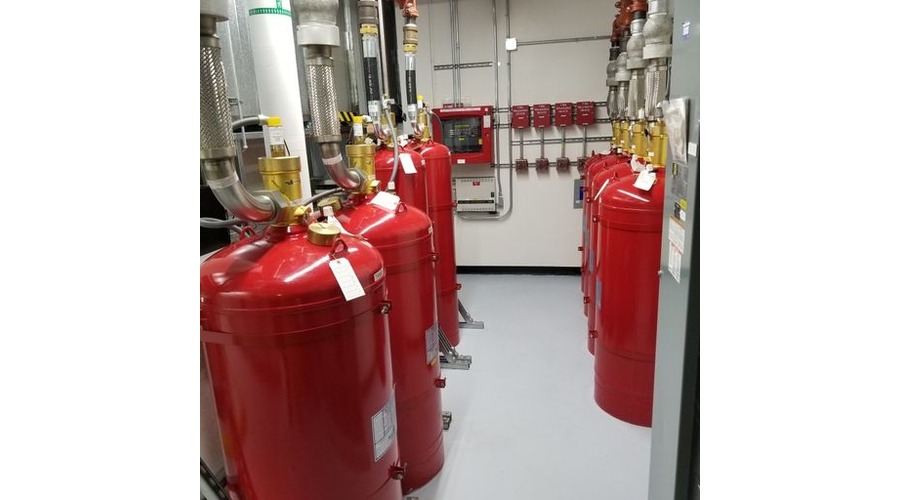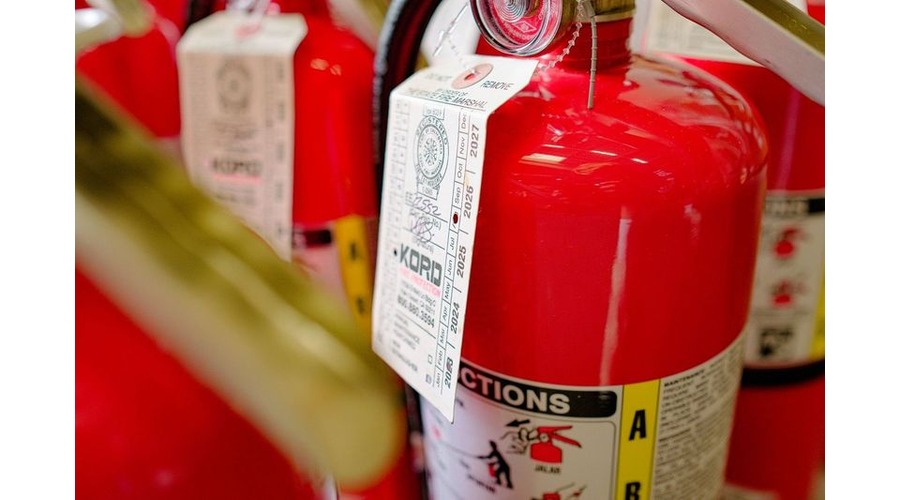

NFPA 402: Aircraft Fire Protection and Emergency Response Guidelines
Introduction
Aircraft fire protection is a critical aspect of aviation safety, ensuring the well-being of passengers, crew, and ground personnel. The National Fire Protection Association (NFPA) has established comprehensive guidelines known as NFPA 402, which outline essential protocols for aircraft fire protection and emergency response. This article delves into the key components of NFPA 402, highlighting its significance in preventing and mitigating fire hazards associated with aircraft operations.
Understanding NFPA 402
Overview of NFPA 402
NFPA 402, formally titled “Guide for Aircraft Rescue and Fire-Fighting Operations,” serves as a foundational document for developing effective fire protection strategies in the aviation industry. This guideline emphasizes the importance of training, equipment, and procedures that enable responders to manage aircraft fires safely and efficiently.
Key Objectives of This NFPA Standard
The primary goals of NFPA 402 include:
- Enhancing Firefighter Safety: Establishing protocols to protect emergency responders during aircraft fire situations.
- Mitigating Fire Risks: Identifying potential fire hazards and implementing measures to minimize risks during aircraft operations.
- Improving Response Times: Ensuring that emergency response teams can act swiftly and effectively when incidents occur.
But What about Aircraft Hangers?
Absolutely, NFPA 402 can apply to aircraft hangars. This guideline provides essential standards for fire protection and emergency response specific to aircraft operations, including those conducted in hangars. It covers crucial aspects such as fire prevention measures, safe storage of flammable materials, and training for personnel. By following NFPA 402, hangar operators can significantly reduce fire risks and ensure a safer environment for both aircraft and staff.


Aircraft Fire Protection Measures
Fire Prevention Strategies
Preventing aircraft fires begins with thorough planning and proactive measures. NFPA 402 outlines several strategies for fire prevention, including:
- Regular Inspections: Conducting routine checks of aircraft systems to identify potential fire hazards.
- Maintenance Protocols: Implementing strict maintenance schedules to ensure all aircraft components function correctly.
- Employee Training: Providing ongoing training for staff on fire prevention techniques and emergency response.
Firefighting Equipment and Resources
Equipping emergency responders with the right tools is vital. NFPA 402 recommends the following firefighting resources:
- Fire Trucks: Specialized vehicles designed for aircraft rescue, equipped with foam and water tanks for effective fire suppression.
- Firefighting Foam: A critical resource that aids in extinguishing aviation fuel fires by creating a barrier between the fuel and oxygen.
- Personal Protective Equipment (PPE): Firefighters must wear appropriate gear, including helmets, suits, and breathing apparatus, to ensure their safety during operations.
Emergency Response Protocols
Incident Command Structure
A well-defined incident command structure is essential for effective emergency response. NFPA 402 emphasizes the importance of clear leadership and communication during a crisis. Key roles include:
- Incident Commander: Responsible for overall management of the incident.
- Safety Officer: Monitors conditions and ensures the safety of all personnel on-site.
- Operations Section Chief: Manages firefighting and rescue operations directly.
Response Time and Action Plans
The effectiveness of an emergency response hinges on quick action. NFPA 402 sets forth standards for response times based on the type and size of the aircraft involved. Typical action plans include:
- Initial Assessment: Quickly evaluating the situation to determine the extent of the fire and potential hazards.
- Evacuation Protocols: Implementing procedures to evacuate passengers and crew efficiently.
- Containment Strategies: Establishing measures to contain the fire and prevent it from spreading.
Real-World Examples
Case Study: The 2013 Asiana Airlines Flight 214 Incident
The crash of Asiana Airlines Flight 214 in San Francisco serves as a pertinent example of the importance of NFPA 402 guidelines. Following the accident, emergency responders faced multiple challenges, including managing fire and ensuring passenger safety. The coordinated efforts of local fire departments and airport personnel underscored the effectiveness of having trained responders equipped with the necessary tools and protocols as outlined in 402. This incident demonstrated how adherence to established fire protection guidelines can significantly improve outcomes in emergency situations.
Case Study: The 2006 Heathrow Airport Incident
In another instance, the emergency response to a fire in a parked aircraft at Heathrow Airport showcased the critical role of fire protection measures. Utilizing firefighting foam and specialized equipment, responders effectively contained the fire, minimizing damage and ensuring the safety of all personnel involved. The efficiency of their response reflected the principles set forth in NFPA 402.
Training and Certification
Importance of Ongoing Training
Training is a cornerstone of effective aircraft fire protection. NFPA 402 emphasizes that emergency personnel must undergo regular training to remain proficient in firefighting techniques, equipment use, and incident command procedures.
Certification Programs
Various certification programs exist to ensure that firefighters meet the standards outlined in NFPA 402. These programs typically cover:
- Fire Behavior: Understanding how fires develop and spread in an aircraft context.
- Rescue Techniques: Learning safe methods for evacuating passengers and crew.
- Equipment Operation: Training on the use of specialized firefighting equipment and resources.
Key Takeaways
- NFPA 402 provides critical guidelines for aircraft fire protection and emergency response, emphasizing safety and efficiency.
- Preventive measures, such as regular inspections and staff training, play a crucial role in mitigating fire risks.
- Effective emergency response relies on a clear command structure and swift action plans tailored to specific incidents.
- Ongoing training and certification programs ensure that personnel remain adept in handling aircraft fire emergencies.
NFPA 402 FAQs
Get Top-Rated Fire Safety Solutions!
At Kord Fire Protection, we understand that safety is more than just a requirement—it’s a promise to protect what you cherish most. With over 20 years of dedicated service in Southern California, we provide top-quality fire protection solutions tailored to your needs. Our pricing reflects our commitment to your peace of mind, ensuring you meet NFPA 402 compliance and safeguard your aircraft. Don’t wait for a fire emergency to act—reach out to us today! Call, email, or fill out our contact form to secure your safety and experience the Kord difference.




